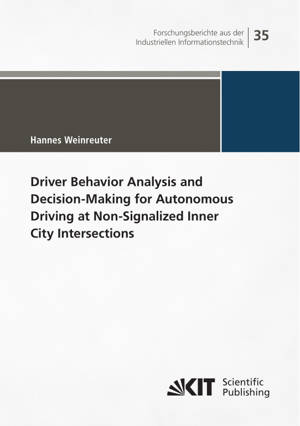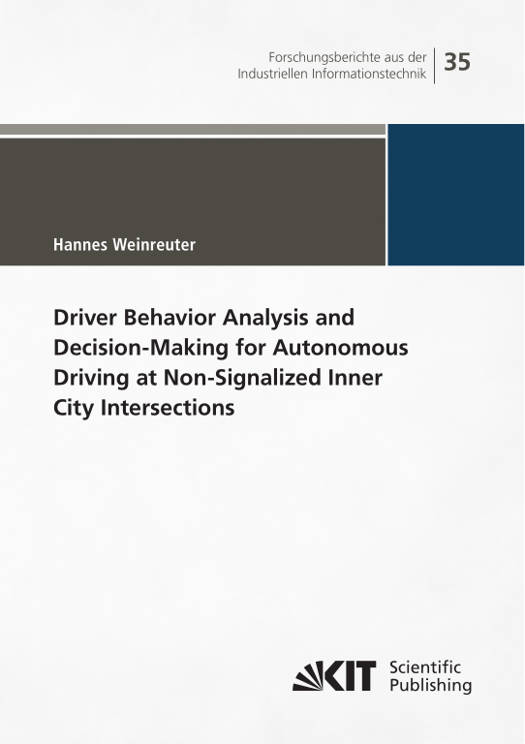
- Afhalen na 1 uur in een winkel met voorraad
- Gratis thuislevering in België vanaf € 30
- Ruim aanbod met 7 miljoen producten
- Afhalen na 1 uur in een winkel met voorraad
- Gratis thuislevering in België vanaf € 30
- Ruim aanbod met 7 miljoen producten
Zoeken
Driver Behavior Analysis and Decision-Making for Autonomous Driving at Non-Signalized Inner City Intersections
Hannes Weinreuter
€ 41,45
+ 82 punten
Omschrijving
The focus of this work is on human driving behavior in road traffic. Two aspects of it are covered, the prediction of it, including the identification of relevant influencing factors, as well as the behavior generation for autonomous vehicles. The behavior prediction is based on a field study during which participants drove a measurement vehicle through inner-city traffic. Using the driven trajectories and lidar recordings complexity features to describe the surroundings at the intersection, the traffic there and the driving path are defined. The driving behavior is characterized by further features. Based on the complexity features regression models are trained to predict the behavior features. For that, linear regression, random forest and gradient boosting machine are utilized. Different complexity feature sets, including ones that are reduced with the help of an autoencoder, are used for prediction. The results show that the driving behavior can be predicted reliably. However, when using complexity feature sets with only few features the prediction performance is reduced. In order to obtain a complexity score that is in line with human perception of complexity, an online study using videos of approaches to intersections was conducted. In pairwise comparisons participants were asked to identify the more complex situation. From that data complexity scores for the intersection passes included in the study are calculated. Several methods are used to assign these scores to the runs of the original field study. Behavior regression models are trained using these assigned complexity scores. The results show that behavior prediction with the complexity scores is possible, however, most variants require to also consider the turning direction as a second feature. The behavior generation for decision-making at T-intersections is based on a discrete event system (DES). For it, several features are used to define events that describe the status of the decision-making process at the intersection. The events trigger the transitions between the states of the DES. All states are associated with either offensive or defensive driving behavior, which is implemented using the intelligent driver model. The algorithm is validated with a simulation framework. Using a generic map and several real maps, the decision-making model is simulated 14400 times while interacting with further cooperation vehicles. None of these runs resulted in a collision involving the vehicle running the algorithm and the times to pass the intersection can be explained by the numbers of cooperation vehicles and the intersection layouts. Further simulations are used to investigate the influence of limited visibility at the intersections on the model.
Specificaties
Betrokkenen
- Auteur(s):
- Uitgeverij:
Inhoud
- Aantal bladzijden:
- 230
- Taal:
- Engels
- Reeks:
- Reeksnummer:
- nr. 35
Eigenschappen
- Productcode (EAN):
- 9783731513933
- Uitvoering:
- Paperback
- Afmetingen:
- 148 mm x 13 mm
- Gewicht:
- 440 g

Alleen bij Standaard Boekhandel
+ 82 punten op je klantenkaart van Standaard Boekhandel
Beoordelingen
We publiceren alleen reviews die voldoen aan de voorwaarden voor reviews. Bekijk onze voorwaarden voor reviews.











